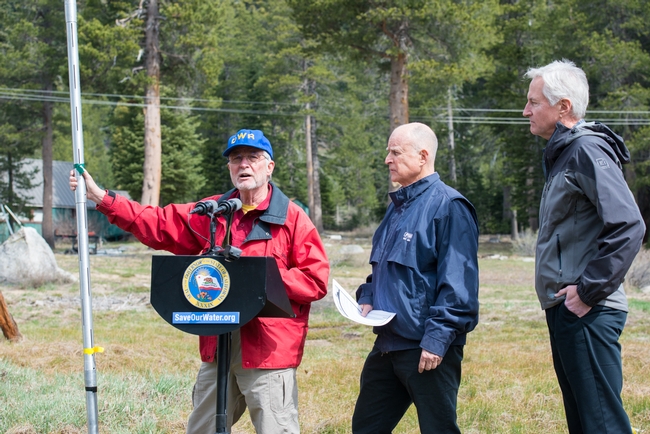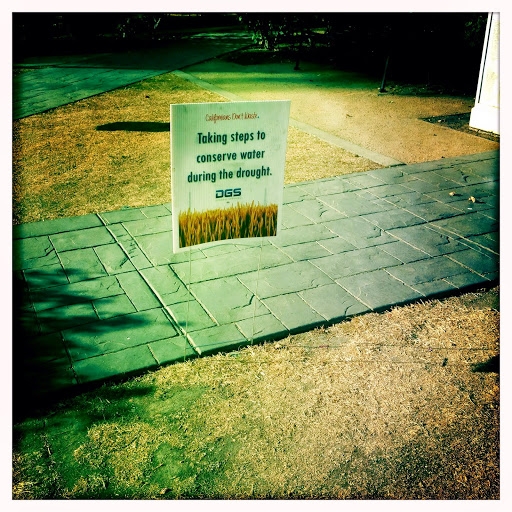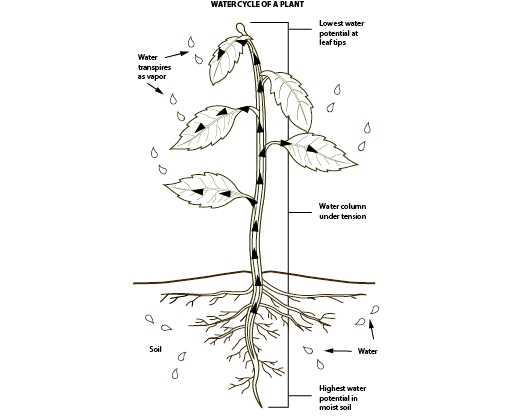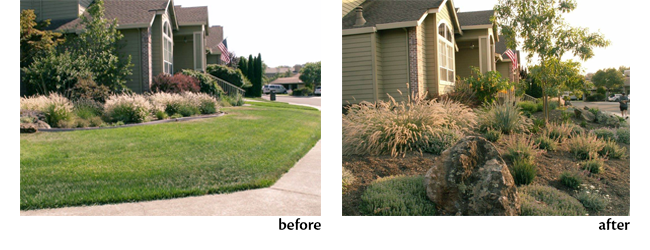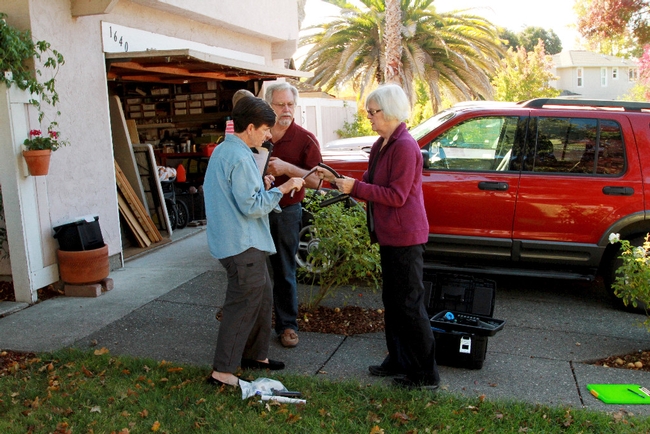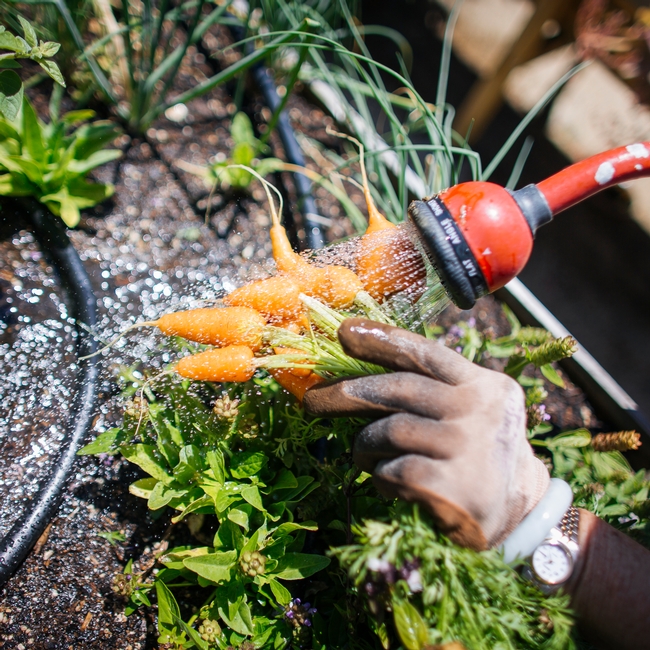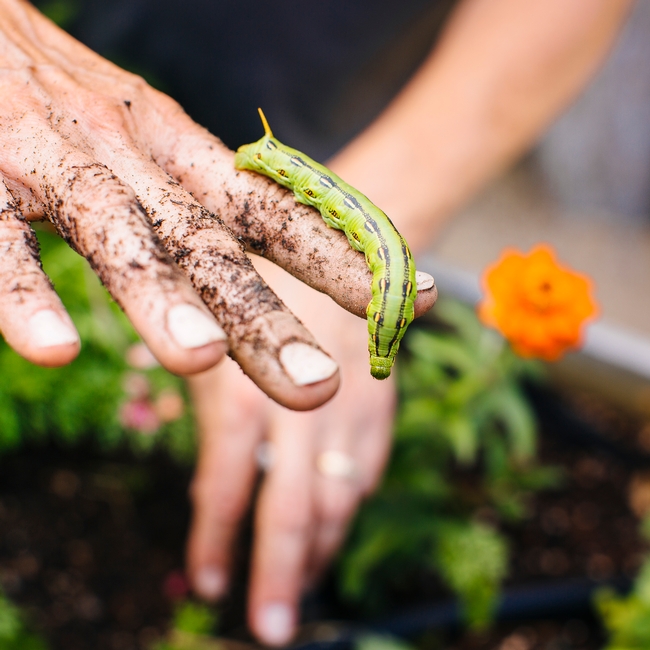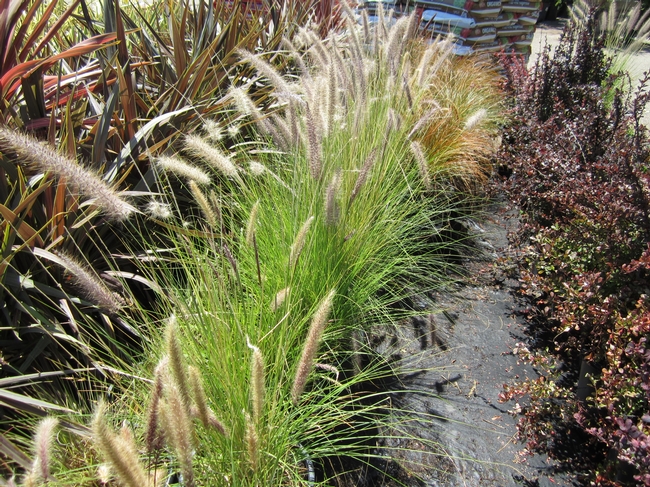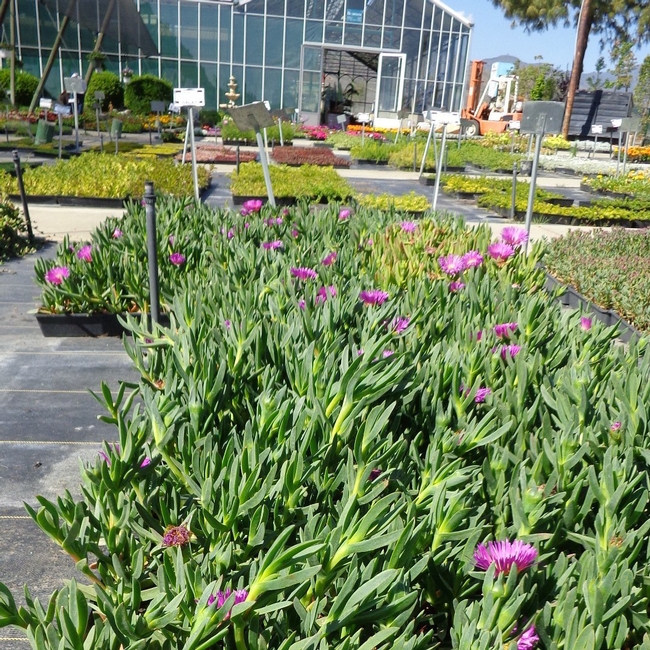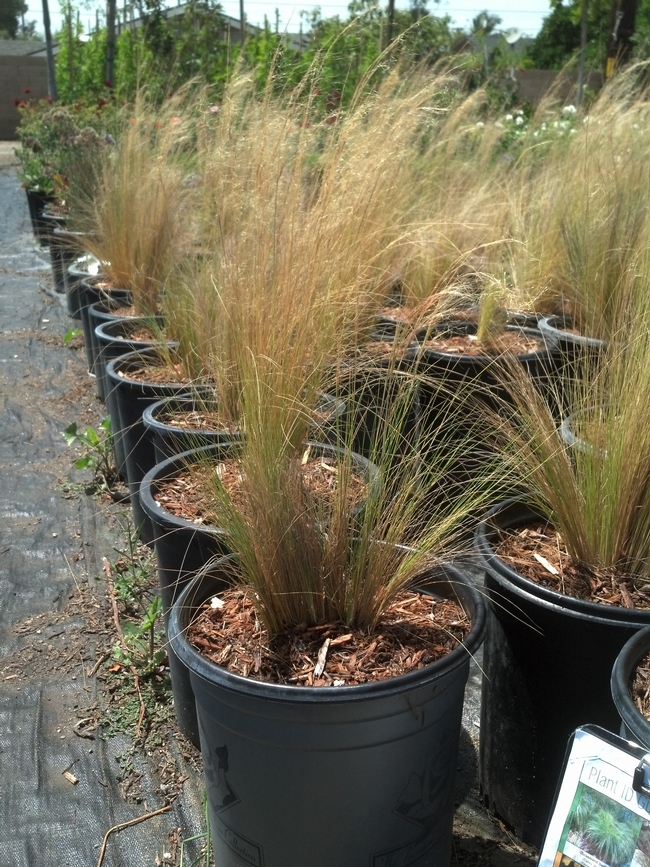In the News
Tips for saving water in your landscape during drought
Standing in the usually snow-packed Sierra Nevada Mountains, Gov. Jerry Brown called for a mandatory reduction of water use across California the beginning of this month. For the first time in the state a required water conservation action has been called, shedding light on the severity of California's drought conditions.
At the direction of Gov. Brown the State Water Resources Control Board will require local water districts to impose a 25 percent water restrictions on all resident's water use.
These new mandatory restrictions have left many home gardeners to wonder what this means for their home landscape.
Reducing Water Use in the Garden
According to The California Garden Web, an informational website about gardening hosted by the UC Master Gardener Program, water use in the home landscape can often be easily reduced by 20 to 40 percent because overwatering is a common mistake by homeowners. Slowly start to reduce water supplied to plants over the course of a few weeks, giving the plants time to adapt to the change.
It is important for residents to remember to not introduce new plants to your landscape during a severe drought. Even California native plants aren't drought-tolerant until they become well established. When water restrictions are lifted and new plants can be introduced, select drought-tolerant varieties appropriate for your climate zone.
Planting in the fall as opposed to the spring allows plants to become established by winter rains. Residents should prioritize water use in their landscape, saving established trees and large shrubs first because they are typically more expensive to replace and require years to mature.
UC Master Gardener Program Offers Help
The UC Master Gardener Program has volunteers across the state, trained by University of California Cooperative Extension (UCCE), available to answer the public's questions about how to save established trees, plants and reduce water use in their yards.
Many of the program's 50 county-based locations offer free to the public hotline services, home irrigation analysis and workshops for the public that are aimed at helping California's residents reduce their water use. Contact a local UC Master Gardener Program for more water saving information and resources.
Trusted Resources
The new second edition of the California Master Gardener Handbook from the UC Division of Agriculture and Natural Resources (UC ANR) is a great resource for drought tips and home landscape water conservation methods. With an extensive chapter dedicated to water conservation methods, best practices for irrigation, plant selection, and tips for protecting water quality in urban landscapes.
Another great option is to use the irrigation worksheet for homeowners that was recently developed by Dr. Loren Oki, CE Specialist, Landscape Horticulture with UC ANR and UC Davis. The worksheet is designed to calculate an irrigation schedule for a landscape zone for one calendar year.
Garden Sense Program Recognized for Saving Californians Millions of Gallons of Water
“Garden Sense is a wonderful example of partnership between UCCE Master Gardener volunteers and our local water agency. A lot of hard work went into developing this innovative program by many volunteers. Everyone involved feels like they're making a real impact in our community in the very important area of water conservation practices.” - Mimi Enright, Program Coordinator
UCCE Master Gardeners of Sonoma County presently have 50 trained volunteer consultants who receive advanced training in lawn conversion, water management, irrigation systems, and low-water use plants. By working together the UCCE Master Gardener Program and the Sonoma County Water Agency help to conserve precious water resources and protect our communities and environment through responsible gardening practices.
Water savings as a result of the first year of Garden Sense consultations are estimated at an equivalent to six acre feet of water saved annually (nearly 2,000,000 gallons)!
For more information about saving water in your home landscape visit your local UC Master Gardener Program for event and workshop information. The newly revised UC ANR California Master Gardener Handbook has helpful information about water conservation and sustainable landscaping practices.
Call for Entries: UC Master Gardener Photo Contest
Oh Snap! It's time to show off your photography skills!
Attention UC Master Gardener volunteers! The UC Master Gardener Program invites you to capture and share your creativity in the garden. Enter the Official 2017 UC Master Gardener Photo Contest for a chance to win great prizes and receive recognition among the entire UC Master Gardener community.
UC Master Gardener volunteers can showcase their amazing photography skills and submit a photo in any of the five contest categories:
- California friendly gardening
- Creatures in the garden
- Incredible edibles
- UC Master Gardeners in action
- Outstanding ornamental
How to enter
Entry is free and open to active UC Master Gardener volunteers. Entries must be submitted electronically by midnight on Friday, June 30, 2017 using the online photo contest submission form. Only one entry allowed per category per participant. Please read and review the official photo contest participation guidelines before entering.
Winners
Photographs will be judged on the overall image quality, subject, originality and composition. First, second and third place category winners will receive a gift certificate, professional print of their winning shot and be featured on the 2017 UC Master Gardener Conference website. Winners will be celebrated and displayed in a photo gallery at the 2017 UC Master Gardener Conference in Long Beach, Aug. 22-25.
The first place winner of each category will be entered into the “Gardeners Choice” contest, to be voted on at 2017 UC Master Gardener Conference in Long Beach, Aug. 22-25. The winner will be announced on Aug. 25 and awarded a $75.00 gift certificate.
More information about the 2017 UC Master Gardener Photo Contest and the 2017 UC Master Gardener Conference can be found online. We can't wait to see your beautiful photos!
Questions? Contact:
Marcy Sousa
Program Coordinator, San Joaquin
Phone: (209) 953-6111
Email: mdhachman@ucanr.edu
How to Prune a Hybrid Tea Rose
>> CLICK HERE TO VIEW VIDEO <<
Many home gardeners plant roses in their landscapes because they can be easy to grow and produce a wide variety of beautiful scented flowers. If you live in California and you haven't already pruned your hybrid tea roses, don't wait! Now is the time to get out and prune.
Roses are typically pruned before dormancy ends in late winter to early spring. In most parts of the state this typically runs from Dec. 15 – Feb 15. The amount of pruning needed depends on the type of rose you are pruning. If you have the most common home garden rose, the hybrid tea rose (3 – 5 feet tall with large, mostly single flowers) they require more extensive pruning.
Watch this short video with Marcia Nelson, UC Master Gardener of Yolo County, and learn some simple tips about how to properly prune a hybrid tea rose for desired shape, growth and flower production.
According to the California Master Gardener Handbook, always remember to follow the fundamental pruning practices for all garden roses:
- Remove broken or damaged canes
- Remove rubbing or crossing canes
- Remove spindly canes, those smaller than a lead pencil
- Make clean cuts towards the outside of the plant at a 45° angle just above a bud or shoot
Help Stop Invasive Garden Plants from Overrunning California's Landscapes!
This spring, PlantRight is conducting its 6th Annual Spring Nursery Survey! UC Master Gardener volunteers can help PlantRight track the availability of invasive plants by simply visiting local nurseries. Check with your local county program coordinator to find out if your program offers volunteer hours for participation.
Participation in the 2015 Spring Nursery Survey is easy, educational, and fun! Volunteers will:
- View an online training
- Download required survey materials (e.g. survey form & plant ID key)
- Sign up to survey a randomly selected store in their county
- Visit the store and record information about any invasive plants being sold
- Submit information to PlantRight
The survey process takes approximately 2.5 hours to complete and can be done with other volunteers - if approved by your county these hours can count towards certification volunteer hour requirements. Returning volunteers may view the full training or a shorter refresher video.
PlantRight will host two training webinars to reflect different survey periods for Southern California (San Luis Obispo, Kern San Bernardino Counties and south) and Northern California:
Southern California Webinar:
Monday, February 23rd, from 7:30 – 8:30 p.m.
Northern California Webinar:
Wednesday, April 15th, from 7:30 – 8:30 p.m.
Sign up at: www.plantright.org/survey-registration
“2014 saw many common invasive plants decline in availability, yet some are more popular than ever. Help us prevent the next big invasive by making the 2015 survey our most successful yet!” –Chris Crawford, PlantRight Survey Manager
2014 Survey Highlights
Thanks to the dedication of more than 120 UC Master Gardener volunteers last spring, PlantRight's 2014 survey was a huge success. Drawing from data collected at 226 stores in 35 counties across the state, PlantRight saw a decline in the availability of invasive plants from their original list, from around 30% in past years to 19% of stores surveyed.
Driving this positive change was a large decrease in periwinkle (Vinca major), dropping from 17% in past years to 9% of surveyed stores. However, the number of stores selling the most recently added invasive plants on PlantRight's list (updated in early 2014) increased. Notably, the drought-tolerant emerging invasive Mexican feathergrass (Nassella tenuissima) increased in prevalence from 27% in 2013 to 38% in 2014.
A comprehensive report and simplified fact sheet detailing the results can be found on the Spring Retail Nursery Survey – 2014 Fact Sheet. These results act as PlantRight's guiding light, shaping its strategy and helping it move forward collaboratively with the nursery industry.
2015 New Plant List
After a year-long review, PlantRight is very excited to share its brand new 2015 list of Suggested Alternatives for Invasive Garden Plants. This list identifies the top ten priority invasive plants for sale in California and provides recommendations on beautiful alternatives. Without the help of the UC Master Gardeners and the data collected from the annual spring survey, the new and improved list would not have been possible.
We are proud of what we've accomplished together with the UC Master Gardener Program, and look forward to working together again in 2015!
-- For questions, contact Chris Crawford, PlantRight Survey Manager, at ccrawford@suscon.org or (415) 977-0380, ext. 331.





